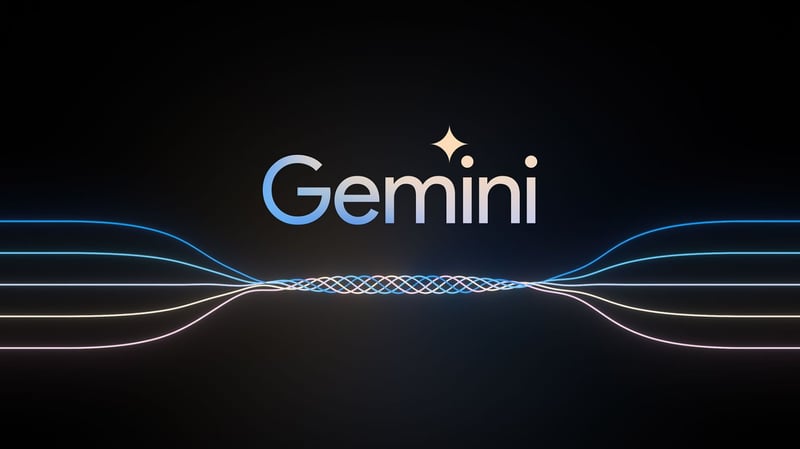Introduction
Generative AI has become a popular topic in the field of technology over the past year. Many developers are creating interesting projects using this technology. Google has developed its own generative AI model called Gemini.
In this article, we will be building a simple Node.js ChatBot and integrating Google Gemini into it. We will utilize the Google Gemini SDK for this purpose.
What is Gemini?
Google Gemini is an advanced AI model developed by Google AI. Unlike traditional AI models, Gemini is not limited to processing text alone. It can also comprehend and operate on diverse formats such as code, audio, images, and video. This feature opens up exciting possibilities for your Node.js projects.
Project Setup
1. Creating a Node.js Project
To begin our project, we need to set up a Node.js environment. Let's create a new Node.js project by running the following command in the terminal:
npm init -y
This command will initialize a new Node.js project.
2. Add boilerplate from Google AI Studio
Get the initial code from Google AI Studio, then click Get Code and copy the code for the Node.js and paste it into a file called as index.js
Also, make sure to generate an API key from the AI Studio. Select your Google Cloud project and click Create
3. Install Dependencies:
Now, We'll install the required dependencies of our project.
npm install @google/generative-ai ora chalk prompt-sync
The packages are used for the following:
-
@google/generative-ai: Google's package for generative AI tasks like text and image generation. -
ora: Creates loading spinners and progress bars in the terminal. -
chalk: Styles text in the terminal with colors and styles. -
prompt-sync: Allows synchronous user input prompts in Node.js applications.
4. Create a chatbot and customize it
In the initial version of our chatbot script, we relied on CommonJS require statements for importing modules. However, in the final iteration, we embraced ES6 import syntax for cleaner and more modern code organization.
Go to your package.json file and add the following line below "main": "index.js",:
"type": "module",
It should look something like this (Top section only):
{
"name": "devarshishimpi-google-gemini-nodejs-chatbot",
"version": "1.0.0",
"description": "Simple Google Gemini ChatBot for Nodejs",
"main": "index.js",
"type": "module",
"scripts": {
"test": "echo \"Error: no test specified\" && exit 1"
},
and continued...
Then, we update from using const to using import
import { GoogleGenerativeAI, HarmCategory, HarmBlockThreshold } from "@google/generative-ai";
import chalk from 'chalk';
import ora from 'ora';
import prompt from 'prompt-sync';
One significant enhancement was the introduction of a user input mechanism using the prompt-sync library. This allowed users to interact with the chatbot in real-time, entering their messages directly into the console.
const userInput = promptSync(chalk.green('You: '));
Then, we customize the user interface with ora and chalk and make it more user responsive and easy to use
while (true) {
const userInput = promptSync(chalk.green('You: '));
if (userInput.toLowerCase() === 'exit') {
console.log(chalk.yellow('Goodbye!'));
process.exit(0);
}
const result = await chat.sendMessage(userInput);
const response = result.response;
console.log(chalk.blue('AI:'), response.text());
}
Then, we add some error handling logic to our code:
if (result.error) {
console.error(chalk.red('AI Error:'), result.error.message);
continue;
}
const response = result.response.text();
console.log(chalk.blue('AI:'), response);
5. Final Output
Please find the final code for project at, please star ⭐️ the repo if you found it useful:
 devarshishimpi
/
google-gemini-nodejs-chatbot
devarshishimpi
/
google-gemini-nodejs-chatbot
Simple Google Gemini ChatBot for Nodejs
Google Gemini Node.js Chatbot
Simple Google Gemini ChatBot for Nodejs
Installation
npm install @google/generative-ai ora chalk prompt-sync
Replace the API_KEY in index.js with your own API key.
node index.js
Contributing
Pull requests are welcome. For major changes, please open an issue first to discuss what you would like to change. Please view the CONTRIBUTING.md for more information.
Output:
We use node index.js to run our code. Make sure to replace YOUR_API_KEY with your generated API Key from Google API Studio.
Conclusion
Thank you for reading! If you found this blog post helpful, please consider sharing it with others who might benefit. Feel free to check out my other blog posts and visit my socials!











Top comments (6)
Such an informative blog, Dev!!
Thank you so much for sharing💪🔥
Thanks for reading Madhu! 🙌
Awesome tutorial, Devarshi! Cool to see how to integrate Gemini in this way. 🤖
Thank you! There's a lot of potential with Gemini and other AI models as much as is there with OpenAI-GPT...
Cool
🚀🚀🚀